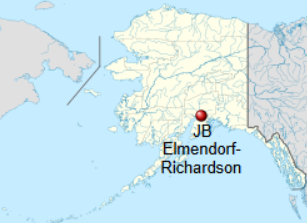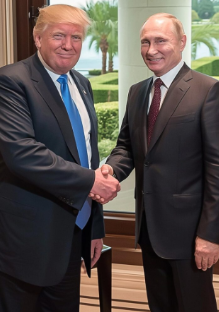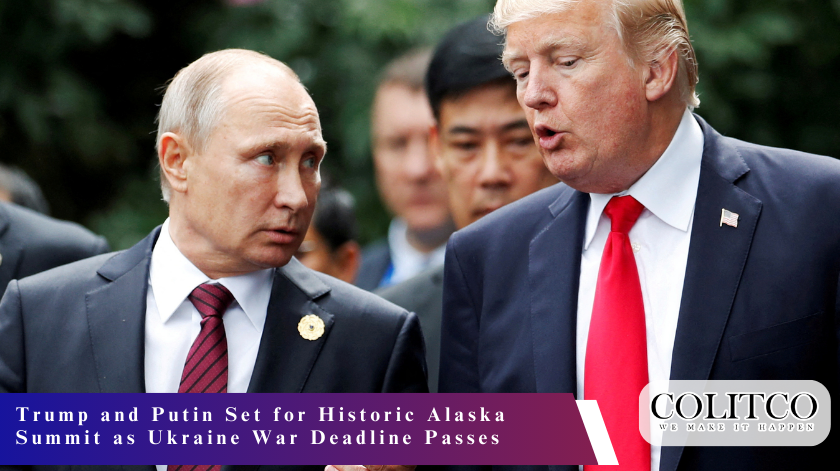President Donald Trump and Russian President Vladimir Putin will meet face-to-face on Friday, 15th August 2025, at Joint Base Elmendorf-Richardson in Anchorage, Alaska, marking the first US-hosted meeting between Russian and American leaders since 2007. The high-stakes summit comes as Trump’s deadline for Russia to agree to a Ukraine ceasefire passed without new sanctions, shifting focus to direct diplomacy in ending the three-year conflict.
The announcement represents a dramatic shift in Trump’s approach after months of increasingly frustrated rhetoric toward Putin. Trump has framed the meeting as a “feel-out” session to understand Russia’s parameters for ending the war in Ukraine, acknowledging it would likely require additional meetings to strike a final peace deal.
Alaska’s Strategic Significance
The choice of Alaska holds particular symbolism for both nations. The 49th state was once part of the Russian Empire before being sold to the United States in 1867 for USD 7.2 million. Putin’s aide Yury Ushakov described Alaska as “quite logical” for such a summit, noting that Russian officials could simply fly over the Bering Strait to reach the venue.

Joint Base Elmendorf-Richardson in Anchorage, Alaska
Alaska’s mainland sits approximately 88 kilometres from Russia across the Bering Strait, making it an accessible neutral ground for both delegations. The location also ensures privacy, as European leaders cannot easily interrupt proceedings without special invitation.
On the Russian side, the delegation includes Foreign Minister Sergey Lavrov, Defence Minister Andrey Belousov, Finance Minister Anton Siluanov, and Special Presidential Envoy Kirill Dmitriev, alongside Ushakov himself.
Contentious Territory Exchange Proposals
Trump has indicated that any peace agreement would involve “some swapping of territories,” a prospect that has drawn sharp criticism from Ukrainian President Volodymyr Zelensky. The Ukrainian leader firmly rejected territorial concessions, stating in a video address that Ukraine “will not give their land to the occupier.”
Early proposals from Trump’s envoy Steve Witkoff have suggested Ukraine might cede remainders of the Donetsk and Luhansk regions in exchange for a ceasefire. The Kremlin has welcomed such ideas, viewing them as favourable to Russian objectives.
The constitutional challenges remain significant. Ukrainian law prohibits territorial concessions without parliamentary approval or a national referendum, creating potential legal hurdles for any agreement Zelensky might consider.
European Concerns Over Exclusion
European allies have expressed grave concerns about Ukraine being excluded from the initial talks. Leaders from the United Kingdom, France, Italy, Germany, Poland, Finland, and the European Commission issued a joint statement insisting that “the path in Ukraine cannot be decided without Ukraine.”
Trump has left open the possibility of a subsequent three-way meeting with Zelensky if the Putin talks prove successful. However, Ukrainian officials acknowledge that logistically, travelling from Kyiv to Alaska would require nearly two days, including a mandatory 12-hour train journey from the capital.
Shifting Diplomatic Dynamics
The White House has notably lowered expectations for the summit, with officials calling it a “listening exercise” rather than a definitive peace negotiation. This represents a significant shift from earlier suggestions that a Ukraine war resolution could be imminent.
Trump’s relationship with Putin has grown increasingly strained throughout 2025. The American president has described recent conversations as Putin “tapping him along” and expressed frustration with continued Russian attacks on Ukrainian cities. Trump told reporters in July: “I go home, I tell the first lady: ‘You know, I spoke to Vladimir today. We had a wonderful conversation.’ And she said: ‘Oh really? Another city was just hit.'”
Market and Global Implications
The summit comes amid significant geopolitical tensions and economic uncertainty. Financial markets have shown mixed reactions to the prospect of potential peace negotiations, while energy prices have fluctuated based on diplomatic developments.
Russian state media has largely celebrated the Alaska meeting as a diplomatic victory, particularly given the exclusion of European representatives from initial discussions. Pro-Kremlin analysts view the bilateral format as advantageous to Russian negotiating positions.
Also Read: Apple’s Secret M4 Ultra Silicon: New Code Hints at Most Powerful Mac Pro Yet
What’s at Stake
Trump has suggested the meeting has approximately a 25% chance of failure and has indicated he would consider additional sanctions against Russia if talks collapse. He has also expressed openness to imposing sanctions on countries that purchase Russian oil if no progress emerges.
The stakes extend beyond bilateral relations. Success or failure in Alaska could determine whether the Ukraine conflict continues into 2026 or moves toward a negotiated settlement. For Trump, the meeting represents a crucial test of his campaign promise to end the war quickly through personal diplomacy.

Donald Trump and Vladimir Putin
The summit marks the first meeting between Trump and Putin since their 2019 encounter in Osaka and Putin’s first visit to US soil since meeting with President Joe Biden in Geneva in 2021.
As preparation continues in Anchorage, the international community watches closely to see whether direct dialogue between the two leaders can break the diplomatic deadlock that has persisted since Russia’s invasion of Ukraine in February 2022.
The outcome will likely shape not only the future of the Ukraine conflict but also the broader trajectory of US-Russia relations and European security architecture for years to come.












